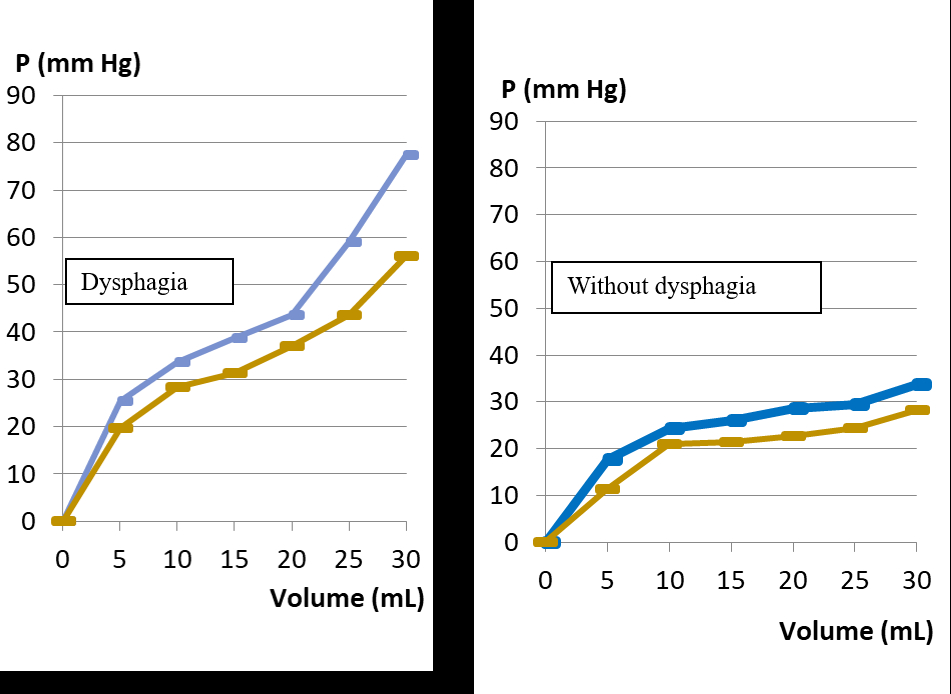POTENTIAL OF INTRAOPERATIVE WRAP PRESSURE VOLUME CURVE DETERMINATION IN PREDICTING POST-FUNCOPLICATION DYSPHAGIA: A PRELIMINARY REPORT
Kenan Ulualp*, Patrick Sanvanson, Karlo Kovacic, Francis O. Edeani, Mark Kern, Reza Shaker, Jon Gould
Medical College of Wisconsin Froedtert Mem Lutheran Hosp, Milwaukee, WI
Background: Dysphagia is a dreaded complication of fundoplication. Methods to predict this complication is not currently available. Since one of the major reasons for post-fundoplication dysphagia is excessive wrap tightness the Aim: of the present study was to correlate the distensibility defined by pressure-volume curve of the fundoplication wrap obtained intraoperatively with the presence of dysphagia at 6 weeks postoperatively. Method: We studied 16 patients intraoperatively by measuring dynamic distensibility of the fundoplication using the methods previously described (Blom D, Shaker R et al. 2005). We used the pressure-volume curve as a surrogate of distensibility. The wrap was distended continuously by injecting 30 mL air into the distensibility bag situated within the wrap at a rate of 30 mL/min. The pressure-volume curve was determined without and during distension of a 2 cm balloon in the mid-esophagus (Figure 1). Patient's office visit record at 6 weeks were reviewed for the presence or absence of dysphagia. Results: Patient records indicated dysphagia in 5 out of 16. Eleven out of 16 did not report dysphagia. Review of the pressure-volume curve in the patients who reported dysphagia showed intrafundoplication pressure of 40 mmHg or higher at 25 mL distension in 4 out of 5 patients (80%) (Figure 2). A similar finding was observed in 1 out of 11 nondysphagic patients (9.1%). With this limited data, the sensitivity and specificity of threshold pressure of 40 mmHg for bag volume of 25 mL yielded 80 % sensitivity and 92 percent specificity. Conclusions: Intraoperative study of dynamic distension of the fundoplication by determining its associated pressure-volume curve has the potential to predict postoperative dysphagia persisted at 6 weeks. Further studies with larger number of patients may provide the opportunity for this technique to guide the construction of the fundoplication.

Back to 2019 Abstracts




